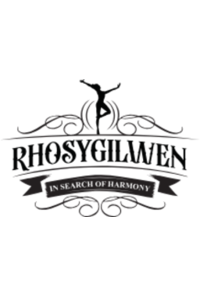At the request of his publisher, Dvořák wrote his second piano quartet in 1889 more than a decade after Brahms finished his stunning trifecta and some forty years after Schumann (Schubert only a youthful two-movement piece for the ensemble). Dvořák’s quartet is big, rich and powerful spanning a traditional four-movement plan. The first movement is a grand sonata form movement that features both Dvořák’s penchant for long, lyrical themes as well as a somewhat uncharacteristic emphasis on a small motive that saturates the texture in a very Viennese classical style: the first four notes played in bold unison become a genetic marker that shows up everywhere throughout the music nearly always signaling a dramatic call to attention. The motive frequently changes character from dark to light, tragic to heroic and a brilliant touch of colorful scoring occurs at the end when it is whispered in soft tremolo by the upper strings just prior to the big finish.
The slow movement, longest of the four, is a deep song of tremendous beauty whose combination of grace, color and passionate emotional outpouring makes the connection between Dvořák and Schubert vividly apparent. There are three primary themes: the first is tender and poised, the second explosive and unbridled while the third sparkles with a pleasant charm. The lingering effect is a sort of peaceful serenity marked by a deeper knowing. A scherzo follows but its features are not quite typical. The first section (the scherzo) is somewhat gentle, swaying to a folk waltz sometimes called a ländler, and purses its own multi-part form full of contrasting sections. The middle section (the trio) is a dashing romp after Schubert or Mendelssohn and its urgent driving energy delivers the character of a scherzo proper, the two sections appearing to be inverted.
The super-charged finale recalls the bold unison lines of the first movement and it appears that Dvořák will conclude with a characteristically upbeat rondo. The movement is actually another sonata form contrasting the boisterous opening material with something soft, lyrical and golden establishing a battle of moods throughout. While commentators often claim that, unlike most of Dvořák’s music, there is nothing particularly nationalistic about this piano quartet, they seem to have missed the finale. Here, a lively folk dance impulse nervously races with pizzicato and bristling piano figurations emulating the Gypsy dulcimer with a momentum that tends to accelerate with passionate abandon. Dvořák concludes with a nearly orchestral sonic might and a definitive exuberance equally matching that of either Brahms or Schumann
Maurice Ravel composed his Piano Trio in the spring and summer of 1914 as Europe descended into the First World War. Swept up in the fervor of the moment, Ravel rushed to complete the work in order to enlist, “working with the sureness and lucidity of a madman,” as he wrote to a friend. In a letter to Igor Stravinsky, Ravel wrote, “The idea that I should be leaving at once made me get through five months’ work in five weeks! My Trio is finished.” The 40-year-old composer served as an ambulance driver in the 13th Artillery Regiment. His age and small stature precluded him from joining the French Air Force, which had been his intention.
Ravel’s Piano Trio inhabits a sensuous dreamscape, far removed from politics and war. It provides a magical escape into a world of shimmering colors, exoticism, fleeting shadows, and an underlying sense of quiet lament. Ravel later noted that the first movement (Modéré) is “Basque in coloring.” In the ethereal opening measures, a theme emerges which haunts the rest of the movement. There are allusions to the asymmetrical 3+2+3 rhythm of the zortziko, a dance rhythm originating in the Basque region of France and Spain. The violin and cello are set in widely spaced octaves with the piano floating in between. The music unfolds as a dialogue, simultaneously passionate, tender, and plaintive. There are passing echoes of jazz and the Eastern sounds of the gamelan. The final bars drift off into mystery and transcendence with a turn to C major (relative to the home key of A minor).
The second movement (Pantoum: Assez vif) is an ebullient scherzo. The title, “Pantoum,” refers to a Malaysian verse form which was popular with French nineteenth century poets such as Charles Baudelaire. In a Pantoum, the first verse’s second and fourth lines repeat as the second verse’s first and third lines. Ravel’s musical lines suggest a similar kind of overlap.
The third movement (Passacaille: Très large) pays homage to the Baroque dance form of the passacaglia, in which variations rise above a repeating bass line. Here, the bass line grows out of the first theme of the previous movement. The music reaches a wrenching climax. A few moments later, the piano drops out and we are left with a soulful duet between the violin and cello.
The solemnity of the third movement is broken by the glistening, fairytale magic of the opening bars of the final movement (Finale: Animé). This larger-than-life music is filled with exuberant splashes of color and shifts between irregular time signatures (5/4 and 7/4), which give us the sensation of floating through midair. The coda soars to heroic and wildly euphoric heights.
Dedicated to Ravel’s former counterpoint teacher André Gédalge, the Piano Trio was premiered in Paris on January 28, 1915.


